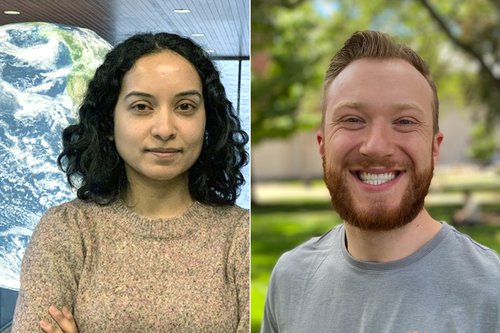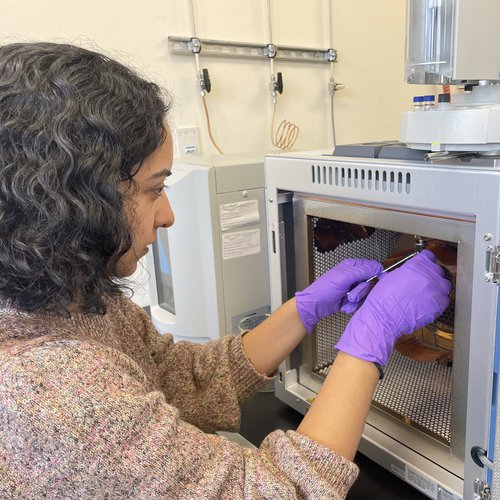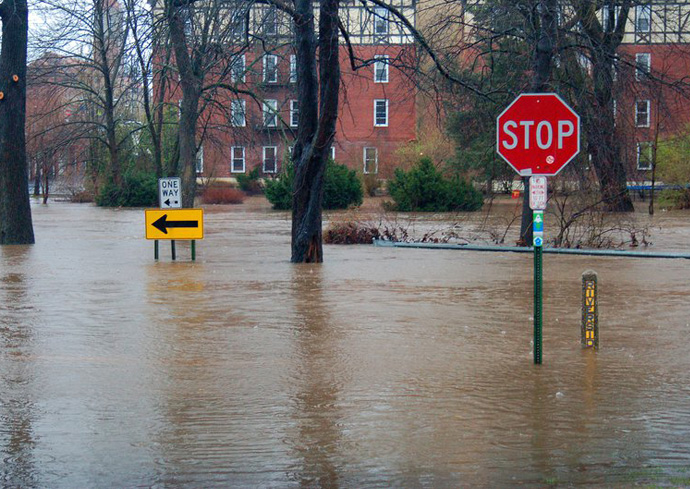Widespread climate change from global warming has devastating and lasting effects on human health, infrastructure and food production. As temperatures rise, certain areas are dealing with intense droughts and water scarcity, while other regions are experiencing catastrophic rainfall and flooding. The eastern United States is one area that has seen a marked rise in torrential storms in recent years. A byproduct of this was the East Kentucky flood of 2022, which occurred when a storm swept through, dropping four inches of rain per hour, resulting in the tragic loss of 44 lives and the declaration of 13 counties as federal disaster areas.
As the eastern U.S. comes to grips with the changing climate, local and state governments depend on accurate rainfall predictions to help save lives and minimize property damage. But human-caused climate change makes it difficult to isolate processes in the atmosphere and ocean responsible for long-term trends in rainfall. This makes it especially challenging to predict rainfall changes on a local scale. A team of researchers from the University’s Department of Earth and Environmental Sciences (EES) in the College of Arts and Sciences (A&S) has been awarded a $547,000 grant from the National Science Foundation to investigate ancient climate data to help improve the accuracy of climate modeling and future rainfall predictions.

The project is led by principal investigator (PI) Tripti Bhattacharya, Thonis Family Professor in EES, and co-PI David Fastovich, a postdoctoral researcher in Bhattacharya’s Paleoclimate Dynamics Lab. Bhattacharya is a leading expert in organic geochemistry and climatology, which involves studying how atmospheric conditions have changed over time. Fastovich, who joined Bhattacharya’s lab at Syracuse in 2022, has particular interest in using the geologic record to better understand future global change.
“This project really brings together David’s and my expertise to tackle a climate question of strong relevance to the northeast U.S., including the Central New York region,” says Bhattacharya.
According to Fastovich, extreme rainfall in the eastern and central U.S. results from a “perfect storm” of conditions in the atmosphere, Gulf of Mexico and Atlantic Ocean.
“When oceanic and atmospheric conditions are just right, air laden with moisture from the Gulf of Mexico is directed towards the central and eastern U.S. This air is then quickly lifted by atmospheric processes creating pockets of intense rainfall,” he explains. “We hypothesize that the relative importance of oceanic and atmospheric processes needed to create extreme rainfall are poorly approximated in climate models that are used to make predictions of the future.”
Answers Embedded in Leaf Wax
The team will take measurements of leaf waxes from lake sediments preserved in the last ice age and compare those results to climate models to identify why predictions of rainfall in the central and eastern U.S. are uncertain.
Their research will focus on the period from the Last Glacial Maximum (~20,000 years ago) to the Holocene (last ~12,000 years of Earth’s history). During this time, there was an increase in atmospheric carbon dioxide which led to ice sheet retreat and ocean heat transport variability—which refers to the fluctuations in the movement of heat within the ocean.
The leaf waxes that the team will study originate from five lakes across Ohio, Missouri and Florida. Bhattacharya and Fastovich will be applying lab methods that extract, identify and measure leaf waxes stored within the sediments.

“My lab measures leaf waxes, but David’s unique expertise is helping us apply this technique in a new setting,” says Bhattacharya. “This grant is a great example of how postdoctoral scholars enrich the depth and breadth of research expertise here at Syracuse University.”
According to Fastovich, being able to engage in this type of hands-on research with field-leading instrumentation was one of the reasons he chose Syracuse.
“I was really drawn to the expertise and analytical capabilities here in Department of Earth and Environmental Sciences,” he says. “Through this project, we’re using sophisticated equipment to study leaf waxes, which make up the shiny layer that can be seen on plants that prevent them from drying out. They are very robust compounds that are stored in lake sediments and hold a wealth of information about climate.”
Improving Climate Models
The team will measure the different proportions of hydrogen atoms in the compounds from these sediment cores to better understand how rainfall in the central and eastern U.S. changed over the last 18,000 years. With the data collected from the leaf wax biomarkers, the team will develop a network of hydroclimate reconstructions to reveal physical processes like atmospheric circulation, evaporation and condensation. These enable researchers to understand changes in atmospheric circulation and hydroclimate.
“Climate models struggle to capture the historic hydroclimate in the eastern United States, as they overestimate precipitation along the Atlantic coast and underestimate precipitation in the Great Plains,” Bhattacharya says. “With precipitation amount and intensity predicted to robustly increase throughout these regions in the coming century, accurate climate models will be an essential tool for policymakers to make informed decisions about adaption strategies and infrastructure planning.”
Fastovich notes that it will be difficult to alter the rainfall trajectory short of stopping carbon dioxide emissions altogether. It is therefore critical to engage in research efforts that improve climate modeling accuracy to prepare for the future.
“The less carbon dioxide is emitted into the atmosphere, the less rainfall will differ from historical trends to which we are accustomed,” he says. “But it’s important to note that the eastern U.S. is locked in for some rainfall changes because of today’s high carbon dioxide levels, and as extreme rainfall becomes more common, preparing infrastructure for this new normal is imperative.”
The Importance of Postdocs
According to Duncan Brown, vice president for research, Fastovich’s contribution to this project exemplifies the significance of postdoctoral scholars to the research mission at Syracuse University. In fall 2023, the University established an Office of Postdoctoral Affairs to provide centralized resources and dedicated staff to serve the interests and well-being of postdoctoral scholars.
“Professor Bhattacharya and Dr. Fastovich’s award demonstrates the important role that postdoctoral scholars play in pursuing funding, as well as working on research and creative projects,” says Brown.
To help more postdocs win research funding, the Office of Postdoctoral Affairs will be running a series of research development sessions targeted at postdocs starting next academic year.



